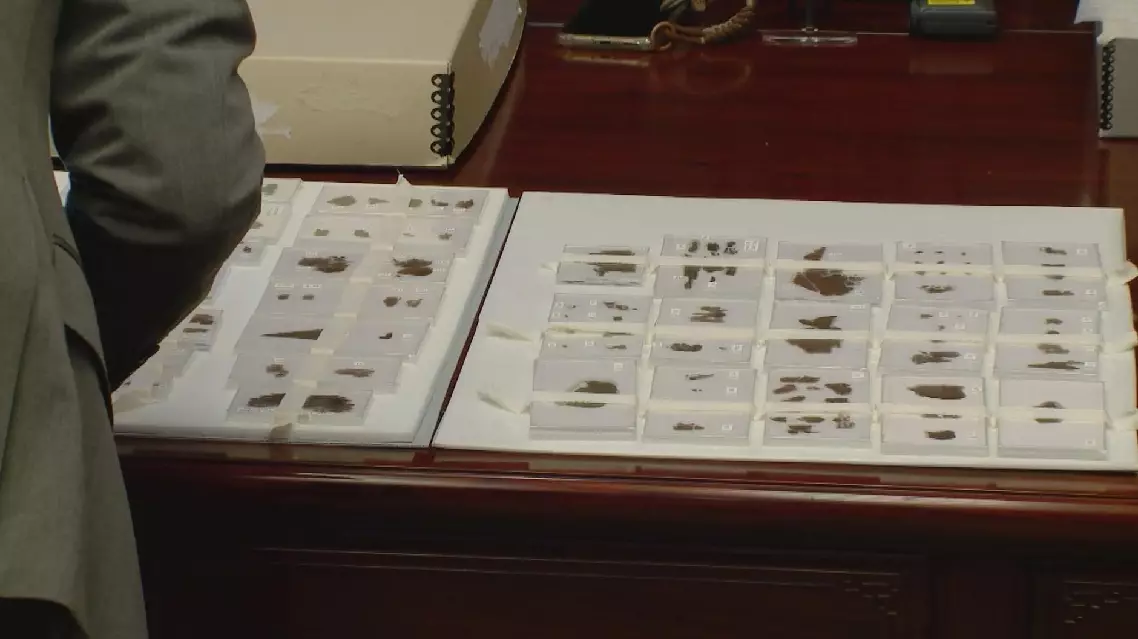The Smithsonian's National Museum of Asian Art on Friday officially returned the Zidanku silk manuscript volumes II and III: Wuxing Ling and Gongshou Zhan from the Warring States period to China's National Cultural Heritage Administration.
The handover ceremony took place at the Chinese Embassy in the United States in Washington, D.C.
The silk manuscripts were unearthed in 1942 from the Zidanku site in Changsha, Hunan Province, and were illegally taken to the United States in 1946. The silk manuscripts are currently the only known silk manuscripts from the Warring States period (475-221 BC).
According to Li Ling, a professor in the Department of Chinese Language and Literature at Peking University who has been studying the manuscripts for over four decades, the Zidanku silk manuscripts are divided into three volumes.
The returning texts, the Wuxing Ling and Gongshou Zhan are the second and third volumes, respectively.
"So far, there have been two major discoveries of silk manuscripts -- one is the Mawangdui silk manuscripts, and the other is the Zidanku silk manuscripts. The Mawangdui manuscripts are from the Western Han Dynasty (202 BC-25 AD), while the Zidanku silk manuscripts are the earliest existing silk manuscripts from the Warring States period, dating to around 300 BC. The contents of these manuscripts are related to ancient Chinese divination and methods, belonging to the category of esoteric literature," said Li.
The Wuxing Ling, consisting of two parts, outlines the dos and don'ts for each of the four seasons and twelve months according to the Five Elements theory.
The Gongshou Zhan, the third volume of the Zidanku silk manuscripts, is a fragmentary text, with the characters arranged in a clockwise direction according to the four cardinal directions (east, south, west, and north). The text is written around the four sides of the silk, and its content concerns the dos and don'ts of siege warfare, including the proper directions for attacking and defending cities, as well as the appropriate and inappropriate dates and times for military actions.
"There is a famous ancient text in the West, the Dead Sea Scrolls, which is an important document related to the religious beliefs of Christianity and Judaism. If we make a comparison, the Dead Sea Scrolls are more than a century later than the Zidanku silk manuscript volumes. For us, Chinese, the Zidanku silk manuscript volumes are of equal importance to the Dead Sea Scrolls in the West. They are crucial to understanding the Chinese knowledge system, as well as Chinese views on the universe and various aspects of daily life at the time. They are an extremely significant document," Li said.
"It [the Zidanku silk manuscript volumes] holds immense value, and no Chinese cultural relic has ever attracted as much attention from both domestic and international academic circles as the Zidanku silk manuscript volumes, nor has any other artifact been the subject of such enduring research," said Zhu Ye, deputy director of the Office for the Repatriation and Retrieval of Lost Cultural Relics at China's National Cultural Heritage Administration.
As the only known silk manuscripts from the Warring States period unearthed in China, the Zidanku Silk Manuscripts -- over 2,000 years old -- are the earliest silk text discovered to date, representing the earliest known example of a classical Chinese book in the true sense. It is of foundational significance for the study of ancient Chinese script and literature, as well as for the history of Chinese scholarship and thought.
These manuscripts will be publicly displayed for the first time in July 2025 at the National Museum of China as part of an exhibition on the repatriation of cultural relics.
The National Cultural Heritage Administration said it will continue to work toward the early return of Sishi Ling, another volume of the Zidanku silk manuscripts.

U.S. museum returns to China ancient silk manuscript volumes from Warring States period

U.S. museum returns to China ancient silk manuscript volumes from Warring States period










